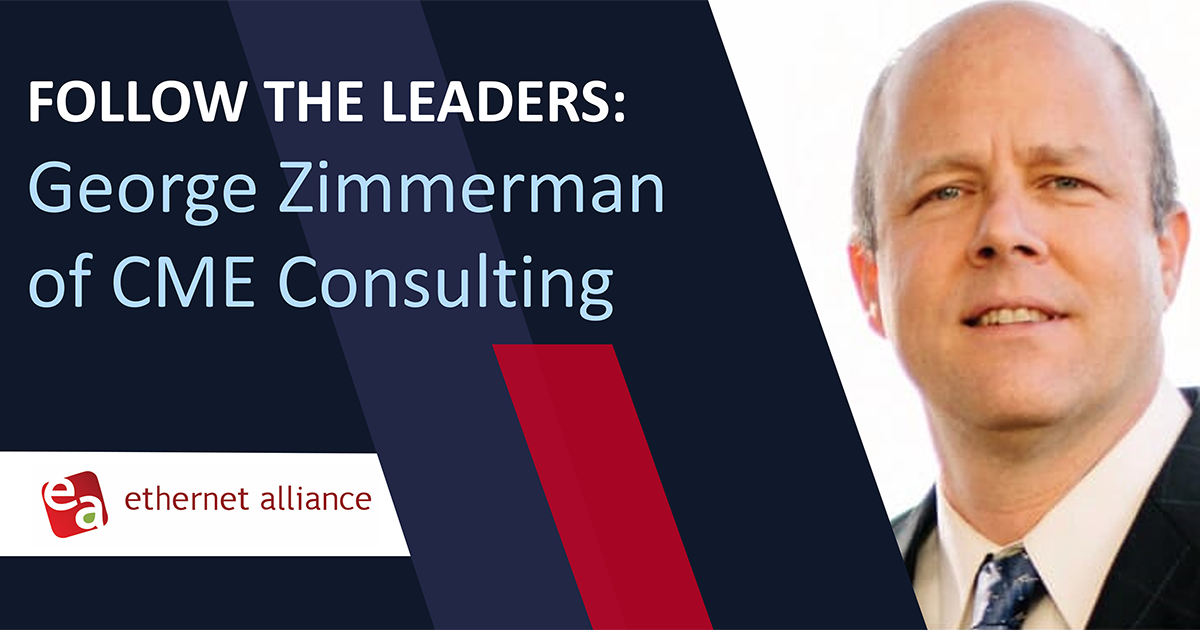Self-Fulfilling Prophecies
Back in 2007, the then Higher Speed Study Group (that went on to become the IEEE P802.3ba Task Force that developed 40 GbE and 100 GbE) developed an industry wide consensus that core networks would need 100 GbE by 2010. Flash forward to two weeks ago – at its July 2012 Plenary session, the IEEE 802.3 Working Group approved the IEEE 802.3 Ethernet Bandwidth Assessment Ad Hoc report. This report essentially obtained data that confirmed the findings of the 2007 Higher Speed Study Group that in core networks, on average, bandwidth requirements are doubling every 18 months. This means average bandwidth requirements in 2015 will be 10x greater than 2010 and in 2020 will be 100x greater than 2010. In layman’s terms core networks will need to support terabit per second capacities in 2015 and ten terabit per second capacities in 2020. It is clear that as a species we must appreciate exponential increases
I would invite each of you to take a moment to read this report. You can find it at http://www.ieee802.org/3/ad_hoc/bwa/BWA_Report.pdf. I won’t steal the report’s thunder here, but I would like to take this opportunity to offer further perspective on a couple of the noted limitations that are mentioned in the report.
- Bandwidth forecasts based on past trends may not be an accurate predictor of future bandwidth requirements. Other influences such as, but not limited to, emerging bandwidth intensive applications, availability of technologies to support higher bandwidth needs, costs, and standardization efforts may have an impact on bandwidth requirements. Also, the potential inaccuracy in any forecasted data will grow the further out in time one looks.
- There are underlying assumptions regarding market adoption of technologies and the continuation of businesses and consumers utilizing applications (present, emerging, and yet to be developed) that may require increasing bandwidth capabilities at an even increased rate.
So, why do I note these two particular limitations? Simple – they highlight the potential role that cost and market adoption of technologies will play in the years to come as the findings of the Ad Hoc are put to the test. And what will help accelerate market adoption and drive cost down?
For those of you familiar with Ethernet and the Ethernet Alliance, the answer is simple – interoperability! Prior alliances, such as the Fast Ethernet Alliance, the Gigabit Ethernet Alliance, and the 10 Gigabit Ethernet Alliance helped launch speed jumps for Ethernet by focusing on supporting demonstration of the interoperability of the technologies supporting speed jumps of Ethernet that was targeted by each group. The Ethernet Alliance is continuing this tradition, nowadays, helping to promote all of the emerging Ethernet technologies from 10 Gigabit Ethernet up to 100 Gigabit Ethernet.
Therefore, while the findings of the IEEE 802.3 Ethernet Bandwidth Assessment Ad Hoc will be of significant interest to many, especially those interested in the next speed jump, it can be argued that the real takeaway of this report is that the interoperability of emerging technologies will drive the bandwidth forecast of tomorrow.
The networking industry has its fate in its own hands – we need to create a self-fulfilling prophecy by making sure that tomorrow’s expectations are met and exceeded by ensuring that today’s technologies are interoperable
So while the Ethernet Alliance has been listening to end-users over the past two years voice their concerns over the oncoming data tsunami, we have also heard these same individuals convey the significance of interoperability within their network from end-to-end. For the past year there have been a multitude of interoperability demonstrations, and plans are currently underway for the Tera Fabric Plugfest in October, which will be the biggest plugfest every hosted by the Ethernet Alliance.
So while I know forecasts can be and often are dismissed – the reality is that all factors continue to: a) indicate there will be exponential growth in data, and b) interoperability of today’s technology is critical to achieving the forecasted data growth rates. In the future we will find out how the IEEE will address its own findings. However, as of today and for all of tomorrow’s tomorrows, the Ethernet Alliance will continue to focus on interoperability.




